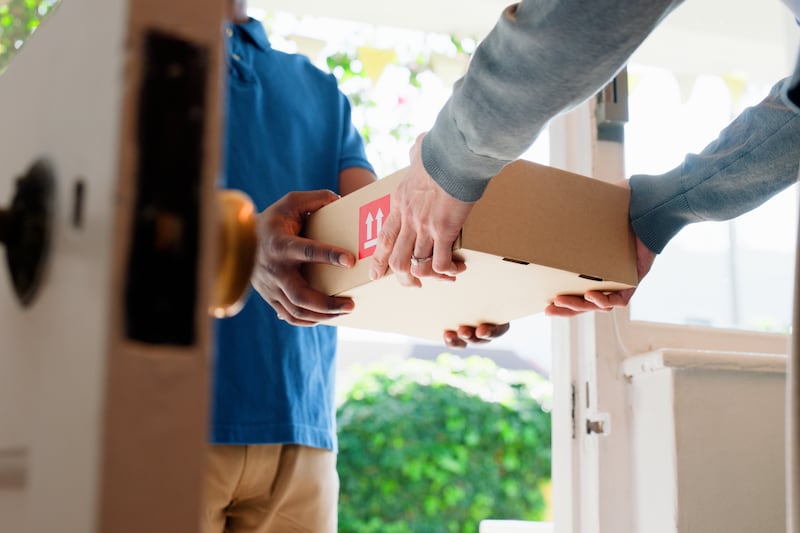As part of Food Month at The Irish Times, Irish chefs working abroad tell us about their jobs. Andrew Cox, from Dublin, is working at a contemporary Peruvian restaurant in Lima.
Where are you currently working and what is you role?
I am here in the Miraflores district of Lima working as a chef de partie at Mayta Restaurante by Jaime Pesaque.
What took you to Lima?
During my graduate visa in New York I worked at a Peruvian restaurant called the Llama Inn, which opened my eyes to Peruvian cuisine, their native flavours and dishes and how it has been influenced by Chinese and Japanese cuisine. I got the bug and wanted to travel here to learn more.
What has been your career path?
It hasn’t been the usual route to the kitchen for me. I studied Management Science and Information Systems Studies and took a job as a data analyst in New York after graduating. I enjoyed the work but also knew that I didn’t enjoy it enough to learn more and progress.
Becoming a chef had always been on my mind and I decided to pursue it more seriously. That’s when I started volunteering at a Llama Inn during my time off. I loved every aspect of it, the heat, the stress, the noise, the fluid movement of the chefs – I wanted to be there all the time! Afterwards, the head chef kindly offered to help me out with finding a job in Lima.
What type of restaurant is it you work in now, and what is the food like?
The restaurant is contemporary Peruvian. A lot of the dishes have their roots in classic recipes such as Lomo Saltado – a beef stir fry with chips – and Arroz con Pato – a northern duck risotto – but have been remodelled with Jaime’s personal touch and technique.
Nearly all of the ingredients and produce come from Peru, which is impressive, even down to things like olive oil and spices. The food ranges from the fresh and bright flavours of our Amazonian ceviche, to the rich and complex flavours of the Sarten de Pato.
Does the restaurant have a signature dish?
The menu changes every few months or so, but one dish that has remained on the menu is the Sarten de Pato – a wonderfully complex duck risotto. The flavours in the rice from the Chica de Jora, an alcohol made from corn, the aji amarillo (their signature orange chilli) , the coriander puree and the duck stock give the dish its Peruvian DNA. We serve it in the skillet topped with a confit leg of duck, smoked duck breast, a fried duck egg and an acidic salsa Chalaca – it’s a real indulgence.
Is eating out in Lima expensive relative to the cost of living there?
Yes and no. Yes, if you want to dine at the better restaurants in Miraflores and San Isidro. A fine dining meal at Central, Maido, or Astrid y Gaston would cost you upwards of €100, which is a lot considering the average monthly salary in Lima is roughly €400 (a chef will earn roughly €300). Having said that, there are fantastic neighbourhood eateries where you can get a delicious and substantial two course menu del dia for around €3.
How does your current job differ from your previous experience?
The Spanish! I’m still waiting for that magic moment people talk about when your Leaving Cert Spanish will return to you.
What does your daily routine involve?
I usually arrive at 10am, when Tocto, our porter, will be cooking a Peruvian dish for our family meal. Marcial will also be arriving at this time with a bounty of fresh vegetables, fish, and meats from the market. We check the prep lists we made the night before and get to work on preparing everything we need for a successful service – chopped herbs, sauces, and so on. After lunch service is done, we have a break for a few hours, strictly nap time for me. We return again at 6pm working the dinner service until around midnight or 1am.
Where do you like to eat when you’re not working?
I try to avoid the kitchen at all costs on my Sunday off. Lima is flush with great sushi places which have been getting a lot of my business lately. The typical sushi restaurant here incorporates many Peruvian recipes and ingredients into their Japanese style.
El Pan de La Chola is a great bakery and cafe. I go there whenever I need a fix of good bread and butter.
What should someone visiting Lima not miss as regards to a culinary experience?
Peru experienced large waves of Japanese immigration, starting in the late 1800s. Many of these migrants settled here and brought their cuisine with them. As a result, Peru is one of the best places in the world to eat Nikkei cuisine, a marriage between Peruvian and Japanese cooking. You find dishes like tiradito, sashimi-style fish dressed last minute with leche de tigre – the citrus marinade for ceviches.
The holy grail at the moment is Maido, which was voted number eight on the San Pellegrino list of the world’s best restaurants. They have a lengthy tasting menu which costs roughly €120, which is awe inspiring. I was like a giddy child throughout the meal. More accessible and highly regarded options are Osaka, Dondoh, and Toshi.

















